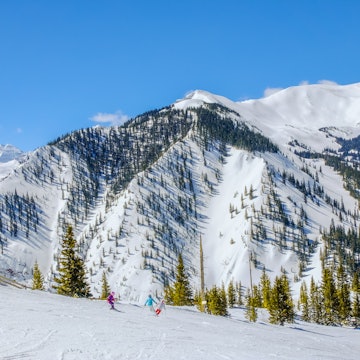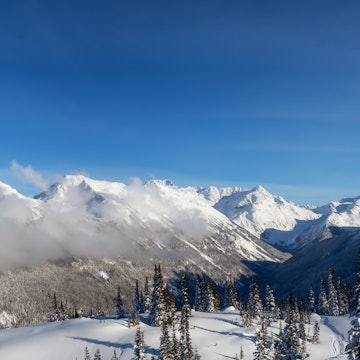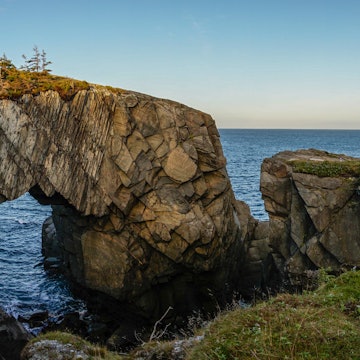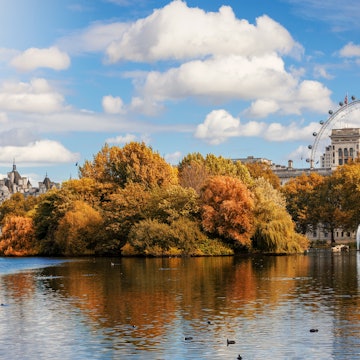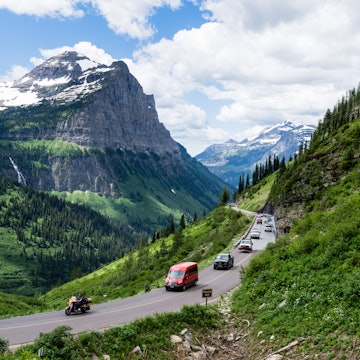

When you first catch sight of the 3,000-strong herd of reindeer, it could take your breath away © Tundra North Tours
More than 80 years ago, caribou numbers in Canada’s Northwest Territories started to decline – a serious threat to the Inuit people who called the region home. In response, a herd of 3500 reindeer from Alaska were herded through the rugged landscape to the region, where they were used for their meat and fur.
Today, that herd of reindeer still exists, with generation after generation replacing the original 3500. It still needs protection from wolves and poachers, and a dedicated herder keeps an eye on these 330-pound tundra walkers. Climb on board a snowmobile and join him – but be prepared, the rush of exhilaration comes with a hefty dose of hard work.
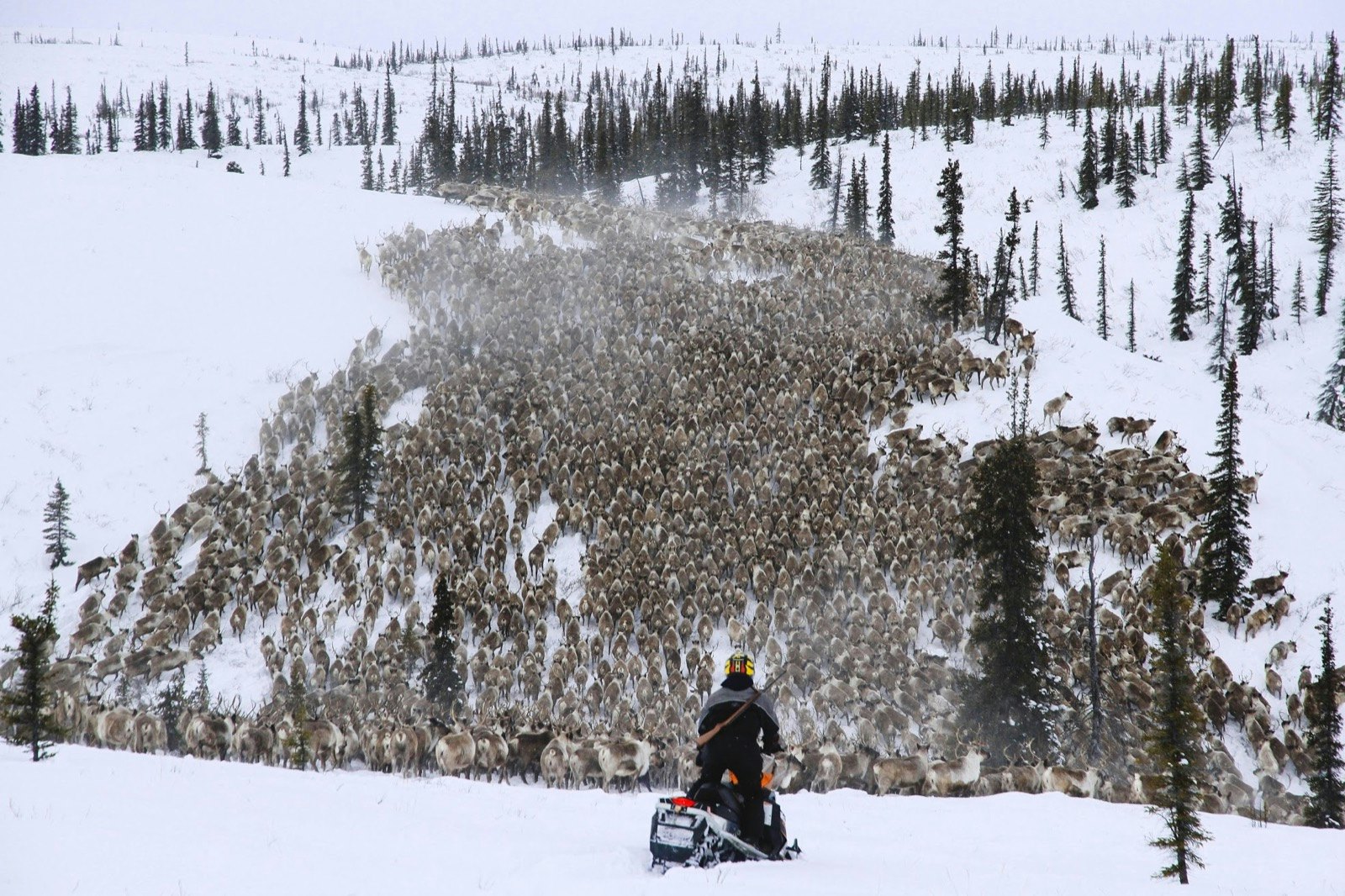
The herder and the herd
Dressed in white snow clothes, perfectly camouflaged against the tundra, herder Tony Lalong never removes his facemask and remains an enigma. He’ll chat with you, but don’t ask for a picture and don’t get in his way – there’s work to be done. He must monitor the land, move quickly and always be on alert. The reindeer must be moved, and you can come along for the ride.
In the Northwest Territories, temperatures can easily fall to -30 degrees Fahrenheit and below. Luckily, Tundra North Tours, a proudly Inuvialuit-owned and operated tourism company, comes armed with everything you need. It provides traditional clothing like fur-lined one-piece parkas, and beaver pelt mittens, that will keep you warmer than any modern material. That’s good, because you’re going to be spending a lot of time in these frigid surroundings, tracking, following, and herding wild reindeer. It’s an entirely authentic Northern experience, and one of Canada's best wildlife excursions.
Although reindeer and caribou are technically from the same family, caribou are typically larger and have been used for their meat and fur by indigenous peoples for generations. When they started to become scarcer 80 years ago, a survey found the land could sustain huge numbers of reindeer and so a convoy began. It took five years to move the 3500 animals from Alaska to Canada. Many were lost and replaced by calves born along the route. But once it was established, the herd grew as large as 18,000 during the days of velvet harvesting. Today the size of the herd fluctuates between 2000 and 3000 and its presence allows the local community to continue to benefit from the practice of many of their traditional skills.
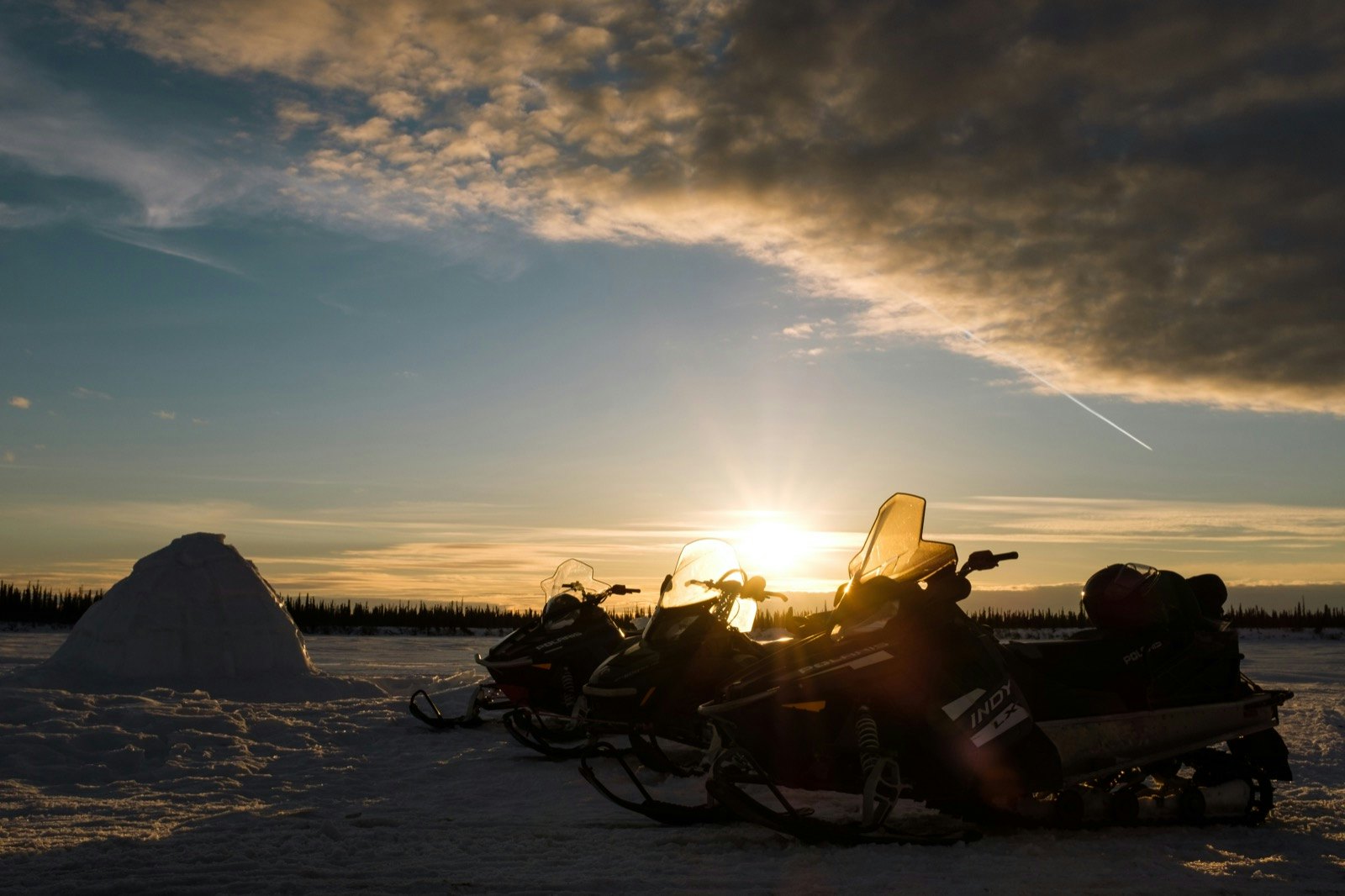
On the heels of the reindeer
Your journey begins once you reach Jimmy Lake, about 20 miles from the small town of Inuvik, along the Mackenzie River and Delta. You gear up, get a helmet, and get on a snowmobile, either by yourself (if you’re feeling confident and competent) or with a guide. As you cross the smooth, frozen lake, the sheer speed of the ride is exhilarating. Pull your face mask up over your nose and mouth but leave your visor open a fraction. Otherwise your breath will fog the magnificent view.
Once you reach the grazing lands, where hoofs have trampled the turf and released the lichen and shrubs from their snowy blanket, it becomes a rougher ride. Snowmobiles can tip here or get stuck, reminding you how remote and isolated the region is. Suddenly you emerge in a clearing, the snowmobile engines are turned off, and a hush descends over the group as you look out over an astonishing sight. Thousands of majestic animals stand close together, sharing their body heat as great plumes of misty breath rise from their mouths. A pregnant cow (female reindeers are not called does) sits on the ice at the back of the herd. The heaving slow-moving mass of brown and white fur is generally a peaceful sight, until every so often a pair of bulls lift up their front legs and show off in a challenge of strength.

The full Northwest Territories experience
Tour guides deftly erect a tent for tea and lunch. It’s hard to drag yourself away from the sight of the herd upon the ice, but after a quick bite Tony and the guides tell you how to find and herd any wandering members of the group. It’s time to hop back on the snowmobile as you make your way through even rougher terrain to hunt down the errant reindeer. Tony does most of the hard work, but it’s no easy task as you follow behind, driving those missing animals back to the herd. Every so often you can get over to the side of the trail and watch in awe as hundreds of hooves lift and fall, stepping in unison, heads and antlers dipping in a strange ballet.
As the experience comes to an end, Tony gets an order from the owner of the herd – there needs to be a quick kill. Taking down one of the reindeer, which will stain his perfect white suit with a red smear, is not gratuitous. It’s not even for sport. This animal will feed families, school children will practice butchery skills on its carcass, and its fur and skin will be crafted into beautiful and useful artifacts. In its death, this reindeer has helped the community keep its culture and ancient traditions alive.
As hooves and hide are dragged onto a sleigh for the journey back to the village, another beautiful day in the North comes to a close.

Make it happen
Four-day adventures from Tundra North Tours run every Thursday from January to April. Tours start at $5200, which includes all travel, shuttles from the airport, accommodations, reindeer herding experience, city and ice road tours, experienced, knowledgeable indigenous guides, and meals.
Where: Inuvik, NWT. Fly in from Yellowknife on Canadian North, First Air or Air North.
What to Eat: Stop by Alestine's, a quirky, tiny restaurant in Inuvik for reindeer chili, fish tacos or burgers. It can get busy but it’s really worth the wait for one of the tables, or in the summer sit on the patio, said to be the only one north of the arctic circle.
Where to stay: Mackenzie Hotel is the only full-service hotel in Inuvik and provides comfortable accommodations, an exercise room, and a restaurant.

Beyond the herding experience: The town of Inuvik, although small, has plenty to interest visitors. It’s home to the Inuvialuit and Gwich'in peoples – you can learn more about them at the Western Arctic Regional Visitor Center. Stop by local craft and art galleries to purchase indigenous artifacts and artwork.
Be sure to visit the Igloo Church, before continuing to the world’s most northern mosque, the Midnight Sun Mosque, which was constructed in Winnipeg before making the almost 3000-mile journey to Inuvik in 2010.








